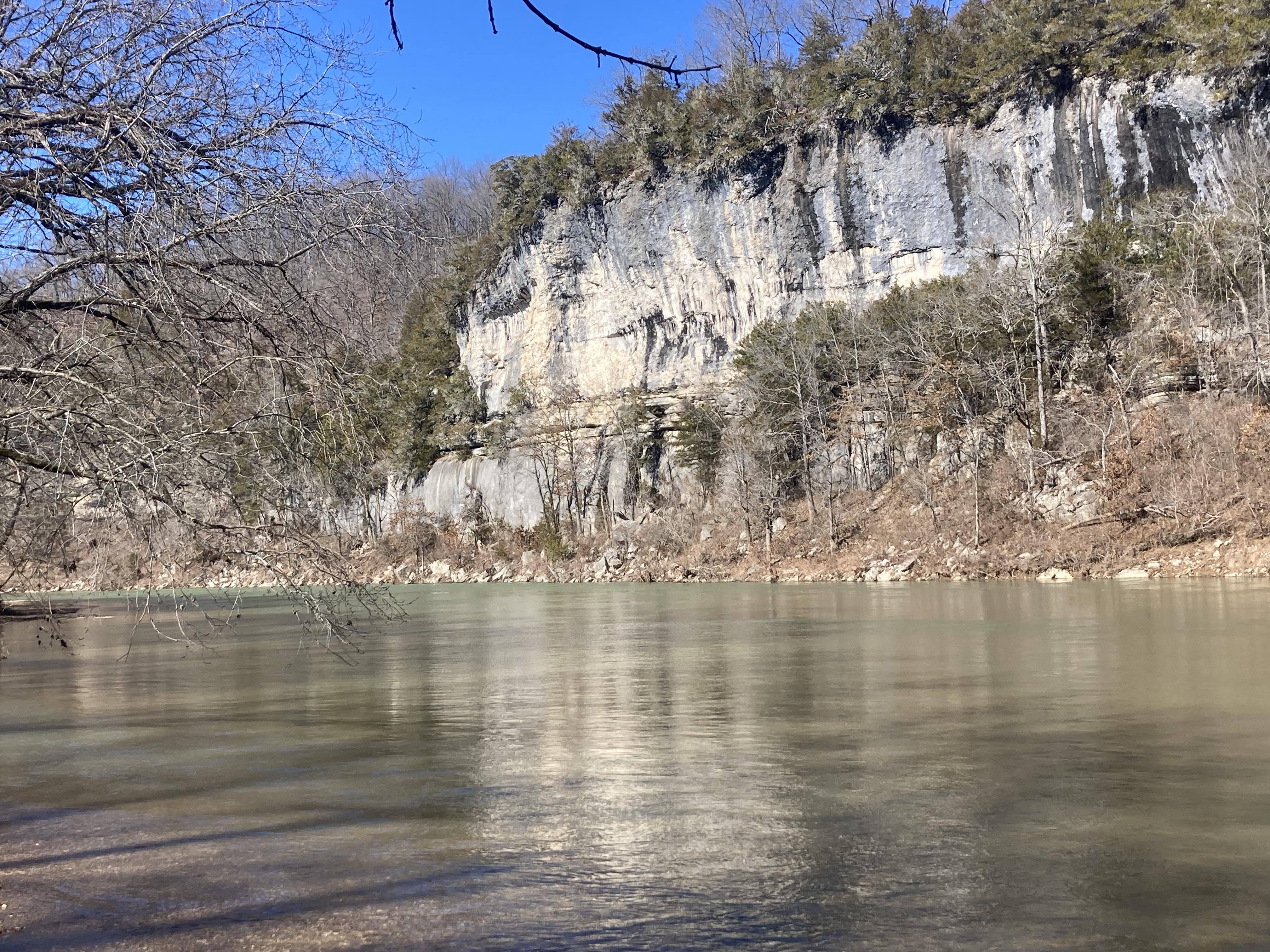Missing Time – unconformities in the rock record
Contact
University of Arkansas System Division of Agriculture
Cooperative Extension Service
2301 S. University Ave.
Little Rock, AR 72204

Missing Time – unconformities in the rock record
The bluffs of the Buffalo National River are surely the most photogenic feature of this Arkansas gem. Reading about the geology of the river brought home the point that the rock record provides a useful but confusing means to understand the events that shaped the landscape we now observe. The largest bluffs are old, dating back to the Ordovician age (445 to 485 million years ago).
But, if you follow the timeline of the rocks up the slope from these massive bluffs, you discover they are topped with Mississippian and later Pennsylvanian age rocks that formed from 358 to 300 million years ago. Two complete geologic epochs, the Devonian and Silurian and the youngest part of the Ordovician, are missing and represent an erasure of almost 100 million years of rock history. This kind of missing rock record is called an unconformity.
The rock record can be thought of as a stack of numbered pages. When some of those pages are removed, an unconformity exists. Whatever was written on those pages is simply gone. Geologists might argue about what could have been there, what caused the erasure of the record, but that is all they are doing. Arguing.
The rocks of the Ozarks are all sedimentary rocks formed from depositions made in shallow or deep oceanic basins or along the rivers leading to the ocean. The Gulf of Mexico and its tributaries are a good analogy to understand how the rocks we see today were formed hundreds of millions of years ago. The larger, heavier sediments settled out quickly while small, light sediments eventually accumulated in calm waters as shale. Coral and all manner of shellfish lived and died in the shallow waters. A limey broth in this same water all combined forces and formed the limestone rocks we see today.
But the earth is never still. Land was pushed up and subsided, oceans rose and fell. When the land was above water, it immediately began eroding, washing back to the sea. Unconformities are common around the world and usually occur as regional or continental events. Because the record is missing, we don’t know if the area remained out of the water for 100 million years or if some rocks were formed but later eroded.
But one, the Great Unconformity, was a worldwide event that happened about 700 million years ago and erased about a billion years of rock history.
The recognition of the Great Unconformity in North America was due to the exploits of John Wesley Powell, the one-armed geologist who in 1869 made his first trip down the Grand Canyon and identified a region of tilted, billion-year-old rocks that were topped by layer after layer of younger rocks. Undoubtedly the Great Unconformity is in the Arkansas rock record too, but the rivers haven’t cut deep enough to expose it.
Knowing what caused the Great Unconformity is one of the current causes of debate in the geological world. The leading theory is that about 710 years ago the world was really cold. In fact, ice sheets extended to the tropical latitudes. This glaciation scrubbed the surface of the planet, grinding well-preserved rocks into cobble and fine grains of sand. This period is referred to as “Snowball Earth” and lasted about 100 million years, with perhaps two or three epoch ice flows during this period.
But, as with any elegant theory, others now question this explanation. Using a technique called thermochronology that looks at the ratio of helium-4, thorium and uranium in zircon crystals embedded in rock samples, it is possible to gauge how long rock samples have been buried and identify their thermal signature. Data suggest that the rocks at the interface between the old and new rocks were eroded at different times, not just during the 100-million-year window when the earth was a spinning ball of ice.
